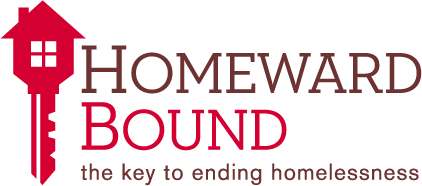“Homeward Bound moved me to the front burner and set me on high.”


Last year Harry moved from a shelter to his own home through his work with us. We interviewed him to understand what the experience was like and what’s happening in his life now.
“A year ago, during the winter months, around January and February I was living in the shelter. I had arthritis in my feet and hands real bad. I got in touch with Homeward Bound and they helped me set a course because I didn’t have the money for an apartment and to get my life on track.
This is the first place I’ve ever had of my own. I’ve always rented a room. This is my little home now. The people who live around me here, we’re all close neighbors and we get on good. There’s no violence or crime around here. We all have a sense of humor. I prank them. I have to keep them on their toes. I see them in the evening and it’s just like a family coming home from a day’s work. I go out there and holler at them. I get them cranked up. Having a place is good for me.
When people ask how I got my place, I tell them, ‘I went to the Lord and the Lord led me to Homeward Bound.’ It all came in one picture and when it did, it showed me the better side that I could live and how to leave the side I didn’t want to be in anymore. Every morning I was waking up and not knowing where my next meal would be coming from or waking up in the morning and wanting a cold Mountain Dew and not having the money in my pocket to do it. I was getting hungry during the day or wanting to lay down and you’d have to go find a bush somewhere. I don’t have to do that anymore. I can get in my bed to lay down or sit in my chair.
I have my own little place where I feel comfortable and safe. I’m a yard person anyway. It’s warming up. I’ll be out sitting out there in the yard, talking with my friends, and just enjoying life having a home. The yard is nice with the trees and the lawn. I used to sit in my grandmother’s yard out there all the time. They wouldn’t let you in the house. We were kids. We couldn’t leave the yard. I’d get sleepy and go to sleep in one of the chairs out in the sun. I do that now the same way as when I was a little kid. The sun is good for the body. I sit out there two or three hours every day and enjoy the sun.
Now I just want to get closer to the Lord. I don’t want much. Everybody can use more money, don’t get me wrong. I only ask for what the Lord gives me and I’m content with that. I’m as happy as a little pea in a pod. Homelessness is just a miserable thing to go through. I went to Homeward Bound and I asked them to help me. They were the only people I asked. They told me six to eight weeks. I got a place in five weeks. I know they’ll always be there because they told me that. They’re beautiful people. I haven’t seen any ugly people. That’s a figure of speech.
When I was around 30 I couldn’t get a place because I had a felony. People would put me on the back burner. Homeward Bound moved me around to the front burner and set me on high. They go through a lot of people in a day. They helped me with my food stamps and a lot of things. If they can do it, they do it all. They get you situated in a place where you feel comfortable. I could have moved if I wanted to, but I want to stay here because it’s my home. I hope I get to live here a long, long, long time. I hope it’s a long time before the Lord calls my number. You don’t have all this agony and weight on your shoulders. I couldn’t feel any better when I get up in the morning.”
